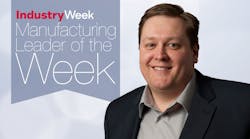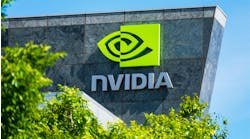For years, graduates from business programs set their sights primarily on high-paying jobs in finance. Manufacturing was usually way down the list of career destinations. That was true for Greg Heinemann initially, but then he came to see things differently.
Heinemann had taken a job with a company that owned commercial real estate and a plastics company. In the process of selling that company to Metro Mold & Design (MMD), a contract manufacturer based in Rogers, Minn., the owner of Metro Mold tried to hire him. He didn’t take the job but four years later, he joined the firm as chief financial officer with a place in the owner’s succession plan.
Manufacturing, Heinemann realized, was much less in demand than technology or health care. So he faced less competition in the field when building his career. During that four years before he joined MMD, he also came to appreciate manufacturing’s role in our economy.
“Manufacturing is a core generator of wealth,” says Heinemann, 37, who became CEO of MMD in April 2015. “If you take some lumber out of the woods and turn it into boards, it is worth more. If you take that and turn it into furniture it's worth more yet. And so I saw American manufacturing needed talent like mine and it needed to become in vogue again.”
The skills gap, says Heinemann, is “the greatest threat to our industry. I don't really even think there is a close second.” To help close that gap, Heinemann has become involved in efforts to start manufacturing companies in two local schools. He is patterning the effort after a program begun by Craig Cegielski in the Eleva-Strum, Wisc., school district. Students apply to join Cardinal Manufacturing, where they try welding, machining, production management and other areas of manufacturing. The self-sufficient program teaches these students valuable skills and, as it notes on its website, has “served hundreds of customers from private individuals to clients throughout the state of Wisconsin and other parts of the country.”
“I'm convinced if the kids learn what manufacturing is, some of them will gravitate towards it and say that's for me,” he says. He noted that students with a four-year college degree can amass $200,000 in debt. But he said students learning technical skills have much lower or no debt.
“Our machinists are starting in the mid-$20 an hour range,” he points out. “That's a great starting wage.”
Asked whether he was concerned that the two school programs might send students to other companies rather than MMD, Heinemann said the skilled worker shortage is an industry problem.
“My strategy is if we can get two programs up and running, I can then become a sales person for those programs to industry and convince even my competitors to part with money to build these programs in the schools,” Heinemann says. “My goal is to churn out lots of kids into our industry whether the competitor gets them or I get them as long as we're all getting enough.”
Arguing that the manufacturing industry “has done a horrible job of marketing what we really are,” Heinemann said kids who are exposed to manufacturing will find that it is not routinized and boring, but rather “a giant choose your own adventure.” He said most manufacturers are willing to invest in talented people with the right soft skills and let them try different roles so they can determine what fits them best.
Solving Problems
MMD’s 225 employees perform processes ranging from molding to machining. MMD focuses on two major areas – the medical market and a broad array of industrial and consumer products. In the medical arena, it largely produces surgical devices for OEMs. For the industrial side, Heinemann notes, the joke in the company is that “we make stuff that ranges from nooks to nukes.” That means products for the defense industry and for early childhood care.
While the medical division has grown quickly over the last few years, Heinemann points out that the industrial business grew more than 20% in the past year.
Heinemann said he has tried to focus the company on the things it does well and the markets where it has expertise. So for example, he said MMD might one day want to get into the automotive market but given the size of MMD and the different systems and disciplines needed for that market, it doesn’t make sense for the present time.
Heinemann is bringing that same discernment to investing in new technologies. When he took over as CEO, he said much of the equipment was more than 10 years old. Now, he says, it is closer to five years old on average. Heinemann said it was important to carefully evaluate new technology and be sure that it provides a sufficient return in terms of keeping costs low and ensuring quality.
“No matter how much some sales guy tries to convince you, nothing is plug and play,” he observed.
When we spoke to Heinemann, he had just approved spending about $500,000 on a new technology that could offer a competitive advantage for a multi-million dollar contract opportunity. He said his technical staff reported it had not “seen a technology that has this capability of offering change in over a decade.”
He noted that many possible equipment or process changes don’t pan out because the incremental improvement is not worth the investment. What is critical, especially for smaller manufacturers, is to recognize transformational technologies and invest in them, not just for the initial equipment but for the soft costs involved in fully understanding the capabilities of the equipment.
That fuller understanding also plays a vital role in how Heinemann interacts with clients. He is a strong believer that contract manufacturers bring the most value to their clients when they engage with them in problem-solving, not simply delivering a certain quantity of parts at a mandated time.
For example, MMD had a customer, a U.S.-based division of a global company, that told them they needed to reduce the cost of a key product line being sold into Europe by 30% in order to counteract exchange rate issues caused by the strong U.S. dollar. They asked MMD what they could do to help.
“Well, this is coming off of four years of innovation where we've already taken 30% out of the cost of the product by basically working with a machine manufacturer to build custom equipment,” he explained. “So we had a highly engineered, highly tuned technical solution to make the part efficiently.”
The solution was to add volume in their shop from a competitor and level load their production. Making the same parts every week, Heinemann explained, provided additional efficiencies that afforded their customer a savings of 10%. Moreover, MMD’s customer also decided to level load their production, which reduced their need to expand further and saved them money.
“It's really not a manufacturing solution, it's a business solution,” said Heinemann. “How do we run the business differently in order to deliver to them significant savings. And once you have a highly engineered automated solution, an additional 10% is a really big number.”
Heinemann said some contract manufactures approach their business on a part-by-part basis. He instead is trying to approach his business on a more comprehensive basis, looking for ways to create efficient “chunks of work.” By grouping “like products, like materials, like processes,” he said, MMD tries to “build a factory inside the factory” and deal with product runs more efficiently.
A People-First Philosophy
While you might expect financial goals to be foremost on Heinemann’s mind, he says people are the essential building block for success of the company.
“I have the philosophy that if I get the right people in the business and I focus on giving them what they need to succeed, they will solve the problems for the customer and then the financial performance of the company will work out,” he explained.
Heinemann said his management philosophy is to empower employees by pushing decisions down to the lowest level in the organization. He said that is critical in today’s business climate because “the speed of a company to be agile and react to changes in the environment is the number one key to success.”
That philosophy of getting employees involved in decisionmaking extends to career development at MMD. While that development includes providing employees training, whether classroom or on-the-job, he said the foremost tool is to make sure young employees are involved in important projects.
“Let them get in the mix and let them learn. If you hired them for the job today, don't just prepare them for the job they're doing today but also for their job they’re going to do tomorrow,” said Heinemann.




